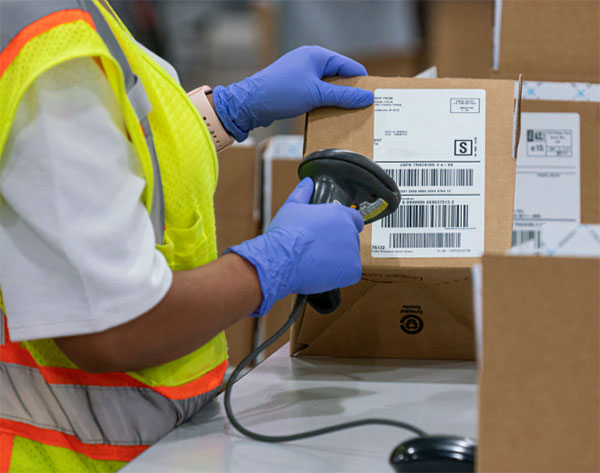Four Key Tips for Successfully Getting Started in E-commerce
DHL Supply Chain can help make your e-commerce vision a reality.

The e-commerce explosion over the last couple years—partly because of the COVID pandemic and changing consumer demands—is forcing many companies to rethink their approach, or non-approach, to online sales. E-commerce is no longer solely a retail strategy; it is now a total industry strategy. No matter what industry you are in, you must have e-commerce capabilities. And the faster you build out those capabilities, the better off your business will be.
At DHL Supply Chain, we work closely with numerous companies across industries to help them implement or expand their e-commerce operations. This experience and expertise have provided a unique level of insight when it comes to strategically integrating e-commerce capabilities into the supply chain. The following are four tips for companies getting ready to dive in.
Minimize Complexity
Adding e-commerce capabilities means your business now must serve more channels, meeting the needs of customers ordering online or from an app, and scheduling delivery directly to their doorsteps. Naturally, this move toward an omni-channel supply chain can increase complexity.
To support this new omni-channel approach, your supply chain needs to easily pivot and be agile enough to support growing demands and move higher volumes to more locationsdown channel silos within your organization and make it easier to share data and information both internally and with partners and service providers.
Mitigate Capacity Constraints
As you add e-commerce capabilities, you must have the flexibility and capacity needed to ensure consumers receive your products when, where and how they want them. It is important to assess your current capacity status, noting where you might have gaps in labor and determining if technology, such as assisted picking robot solutions, can be strategically and quickly deployed to mitigate capacity constraints.
It is not simply about meeting hiring quotas and headcount. Rather, it is about having streamlined and efficient recruiting and onboarding processes that make it possible to match the right talent for the job and easily ramp up additional skilled workers when and where they are needed. It is also about using technology, such as automation solutions, to offset labor shortages, creating an efficient, comfortable work environment for current workers, and quickly shifting additional capacity as necessary.
Enhance Supply Chain Visibility
The more your supply chain evolves and grows, the greater the need for end-to-end visibility and management. This is especially true as you add e-commerce capabilities. It is vital you have the supply chain data to make informed decisions on inventory placement and capacity needs across several locations. Achieving end-to-end supply chain visibility can often be a daunting endeavor as it can bebe challenging to assess your current state and determine next steps or create a roadmap for reaching the desired goal.
It is imperative you develop and implement strategies for inventory placement, accommodating new inventory, growing market share, integrating new suppliers, shifting resources and ramping up volume. You also must be able to manage your transportation remotely and securely, knowing the exact location of your vehicles and containers, so you can track shipments quickly and easily. Most importantly, the utilization of smart analytics techniques will help you collect and organize newly available data to diagnose operational issues, optimize network planning, generate efficiencies, and predict future scenarios for a competitive advantage.
Prepare for Peak Variability
No matter how much companies try to proactively predict and prepare for peak demand, it often isn’t enough, especially with the massive growth in e-commerce. Peaks are challenging because of their fleeting nature: a peak is not a constant, and it’s hard to gauge the degree of flexibility and agility your business will need, and when and where it will be needed. The key to effectively navigating peak periods is moving from a reactive state to a more proactive planning approach.
This requires you to communicate a clear plan across your organization and supply chain partners that focuses on successful execution as peak periods approach. Be sure to identify additional capacity needs and maintain operational flexibility that utilizes a strategic blend of innovative technologies to enhance productivity of existing workforce. You should also establish benchmarks based on previous year’s results, conducting a detailed review of successes and failures and ensure learnings are applied across your organization.
可以理解的是,有效地整合电子商务into your business model presents a massive challenge. However, partnering with a third-party logistics partner (3PL), such as DHL Supply Chain, can help make your e-commerce vision a reality. DHL has the right experience and expertise to minimize complexity, mitigate capacity constraints, enhance supply chain visibility and prepare for peak variability so you can focus on your business.
For more information about e-commerce support from DHL Supply Chain, visitwww.dhl.com/supplychain/ecommerce.

Article Topics
3PL News & Resources
FedEx reports mixed fiscal first quarter earnings, with Ground up 3% ATA August tonnage readings are mixed USPS is gearing up for Peak Season, says it will not levy a holiday surcharge August U.S.-bound shipments see another month of declines, reports S&P Global Market Intelligence LM reader survey points to strong possibility of the economy entering into a recession August intermodal volumes see another month of declines, reports IANA National diesel average rises for the ninth consecutive week, reports EIA More 3PLLatest in Logistics
U.S. rail carload and intermodal volumes are up, for week ending September 16, reports AAR Q&A: Cary Davis, American Association of Port Authorities President and CEO-elect Estes’ $1.52 billion bid beats ODFL’s bankruptcy offer for Yellow terminals FedEx reports mixed fiscal first quarter earnings, with Ground up 3% Ryder announces the official entrance of its BrightDrop Zevo 600 electric vans Success in Volatile Markets: How High-Tech Companies can Optimize Their S&OP Process ATA August tonnage readings are mixed More LogisticsSubscribe to Logistics Management Magazine

Find out what the world's most innovative companies are doing to improve productivity in their plants and distribution centers.
Start your FREE subscription today.
September 2023
万博2.0app下载

Latest Resources






